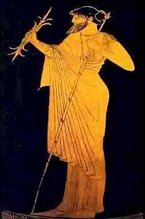
We had a nice response to our last article concerning the US Cent so we are adding a bit more. I hope you enjoy and we love to get feedback. You can e-mail me at coinstore@comcast.net or you can simply respond online. I hope the following is informative and enlightening.
The cent was made of pure copper from 1793 to 1837.
The cent was made of bronze from 1837 to 1857.
In 1857 the cent was mixed as an alloy of 88% copper and 12% nickel. This continued until 1864.
From 1864 to 1962 the coin was once again changed to bronze.
From 1962 to 1982, the cent's tin content was removed. This resulted in a composition of 95% copper and 5% zinc.
In 1982, the cent's composition was changed to 97.5% zinc and 2.5 % copper and this is what we now call the "clad penny."
Addendum: in 1943, the coin's composition was changed to zinc-coated steel. This change lasted for one year only and was created as a result of the critical use of copper during WWII.
I hope you have enjoyed these little facts and we will appreciate any information you may want to share. God Bless.. Jerry..

3 comments:
nice post. Did you know that pennies are poisonous to dogs because of the zinc? My wife is veterinarian.
hey there, nice post. it's very interesting to know stuff from other coin collectors. I also do collect coins for several reasons, but I mainly collect some rare coins because it's been my hobby. I also do have a coin site 2-Clicks Coin Collecting Guide, if you have some time try visiting us, and you can also drop a line and communicate to other collectors in our exchange page. We have coins by country,by type, coin values and lots of informative resources. Just ping me if you have the time. Once again, your post is very interesting. You take care.
Nice way to lay out the changes in cents.
Although I would make a note that 95% copper and 5% zinc is acutally bronze or bronze alloy, and some 1944 issues of the Lincoln Cent where just copper and no tin (often refered to as shell-case brass).
Post a Comment